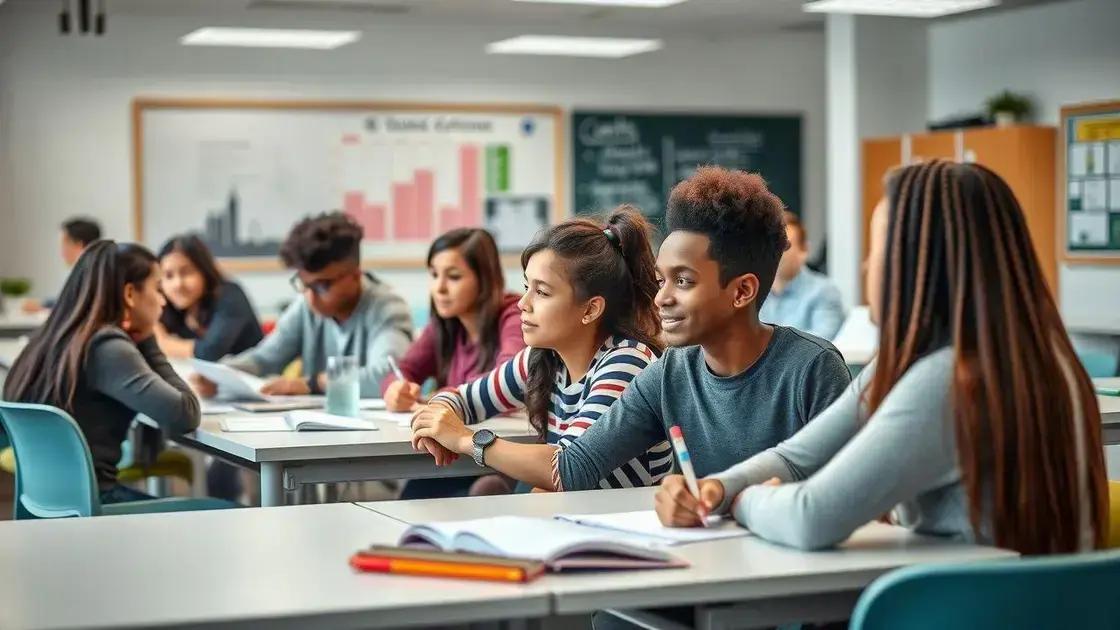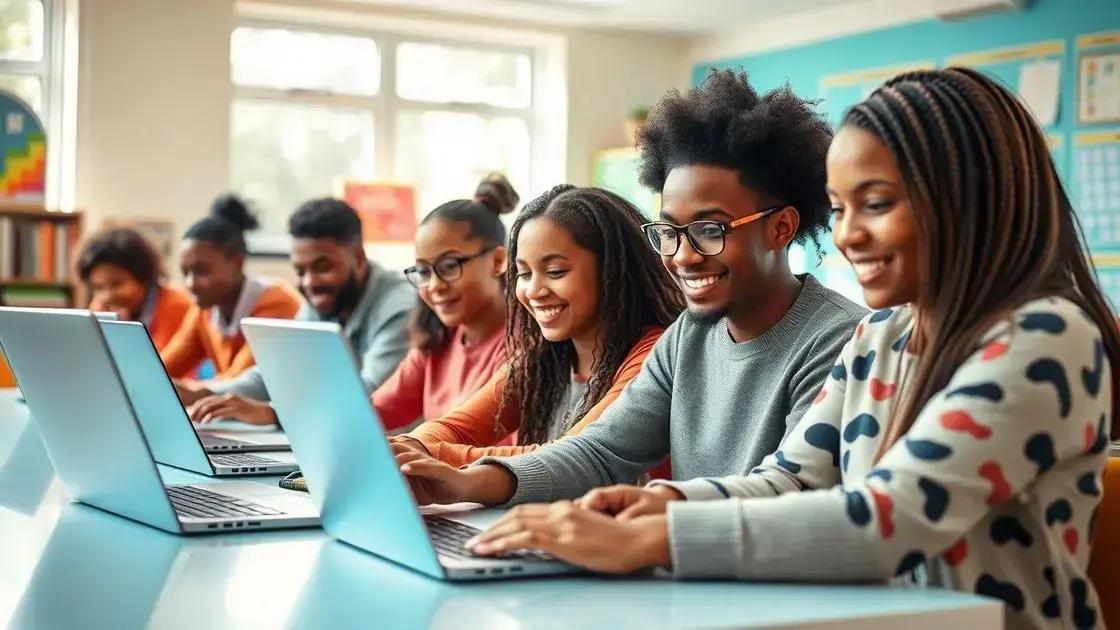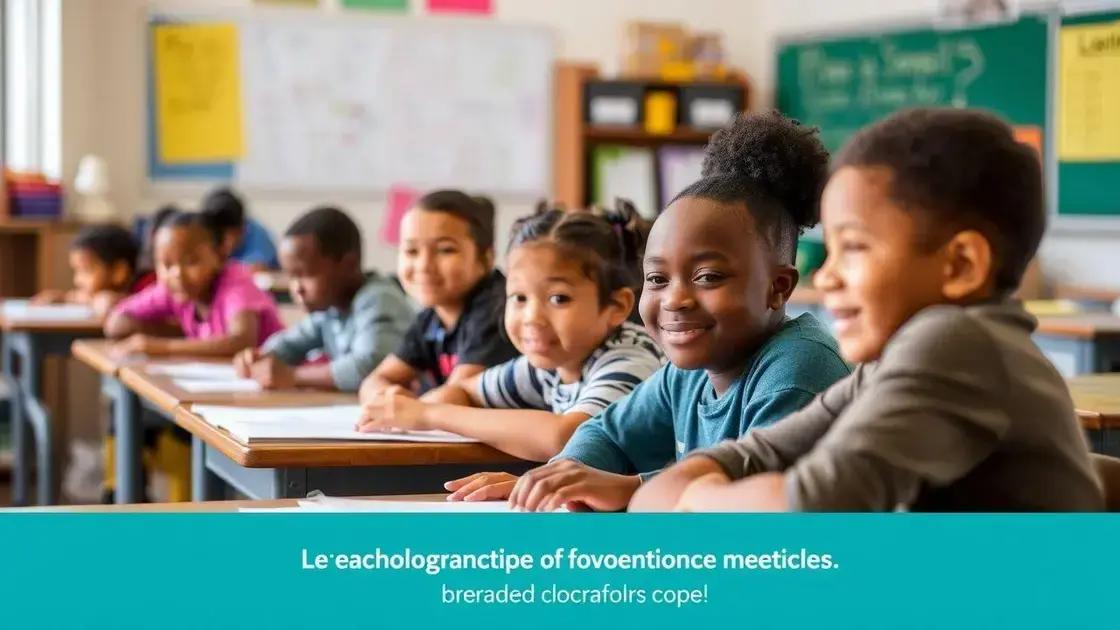Classroom innovation ideas that enhance student engagement
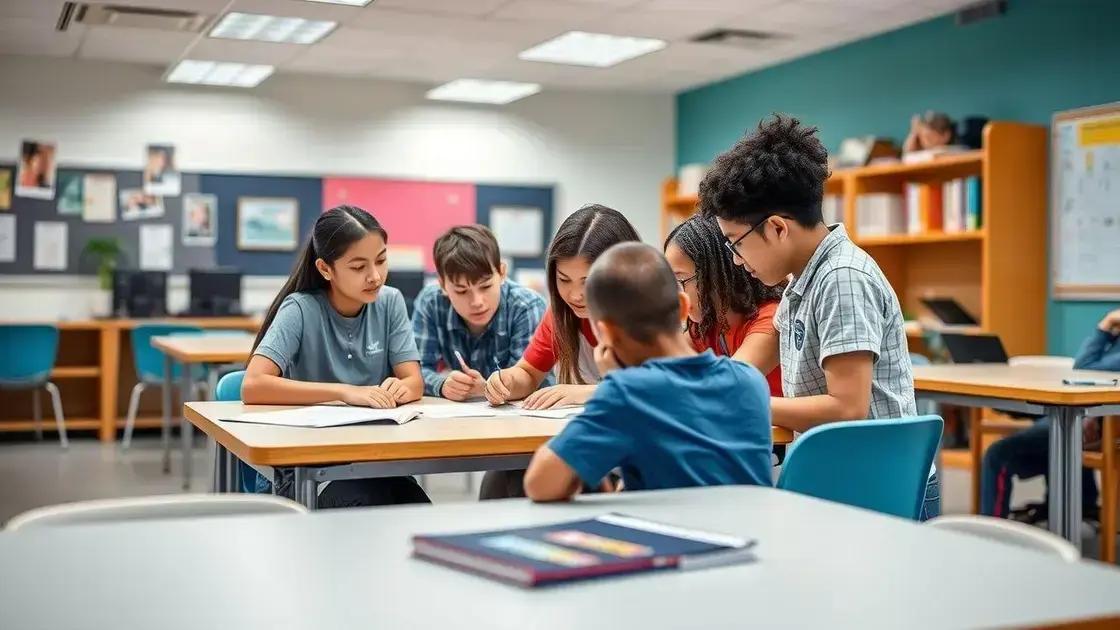
Classroom innovation ideas, such as collaborative projects, gamification, and open-ended activities, enhance student engagement, creativity, and critical thinking in modern educational settings.
Classroom innovation ideas are essential for teachers looking to create engaging and dynamic learning experiences. Have you ever wondered how you can make your classroom more exciting? In this article, we’ll explore practical strategies to enhance student participation and enthusiasm.
Creating a collaborative learning environment
Creating a collaborative learning environment is vital for fostering student engagement and encouraging teamwork. When students work together, they learn to communicate effectively, share ideas, and solve problems as a group. This article will explore how to develop such an environment in your classroom.
Encouraging Group Work
One effective way to promote collaboration is through group work. Assign projects that require students to work together, allowing them to contribute their unique perspectives. This not only helps them learn from one another but also builds a sense of community.
Flexible Seating Arrangements
Consider rearranging your classroom with flexible seating options. By providing different types of seating, such as bean bags, cushions, or group tables, you can create spaces where students are comfortable collaborating. They will feel more relaxed and willing to share their ideas.
- Create group zones where students can gather easily.
- Incorporate tools like whiteboards or digital devices to facilitate brainstorming.
- Encourage students to set goals as a team for their projects.
Regularly evaluate the effectiveness of these strategies. Ask students for feedback on how the environment makes them feel. This feedback will guide you in making further improvements. Ultimately, creating a collaborative atmosphere in your classroom can boost students’ confidence and enhance their learning experiences.
Integrating technology for interactive lessons
Integrating technology for interactive lessons is essential in today’s classroom. By using digital tools, teachers can create more engaging and dynamic learning experiences. Students benefit greatly from incorporating technology into their studies.
Utilizing Digital Tools
One way to enhance lessons is by utilizing digital tools. Applications like Google Classroom or Edmodo facilitate communication and collaboration. These platforms allow students to share resources easily, submit assignments, and receive feedback instantaneously.
Interactive Learning Activities
Interactive activities like online quizzes and virtual simulations capture students’ attention. Tools such as Kahoot! or Quizizz promote friendly competition and make learning fun. Incorporating these tools encourages active participation and increases retention of information.
- Use educational videos to complement lectures.
- Encourage students to create presentations with multimedia content.
- Implement coding lessons to teach problem-solving skills.
Moreover, incorporating technology fosters a sense of independence. Students can explore topics further through online research. This encourages them to take ownership of their learning. When students feel in control, they become more motivated.
Additionally, providing access to technology helps prepare students for future careers. In a world driven by tech, familiarity with digital tools is crucial. This experience not only enhances their current education but also sets them up for success.
Encouraging student-led projects
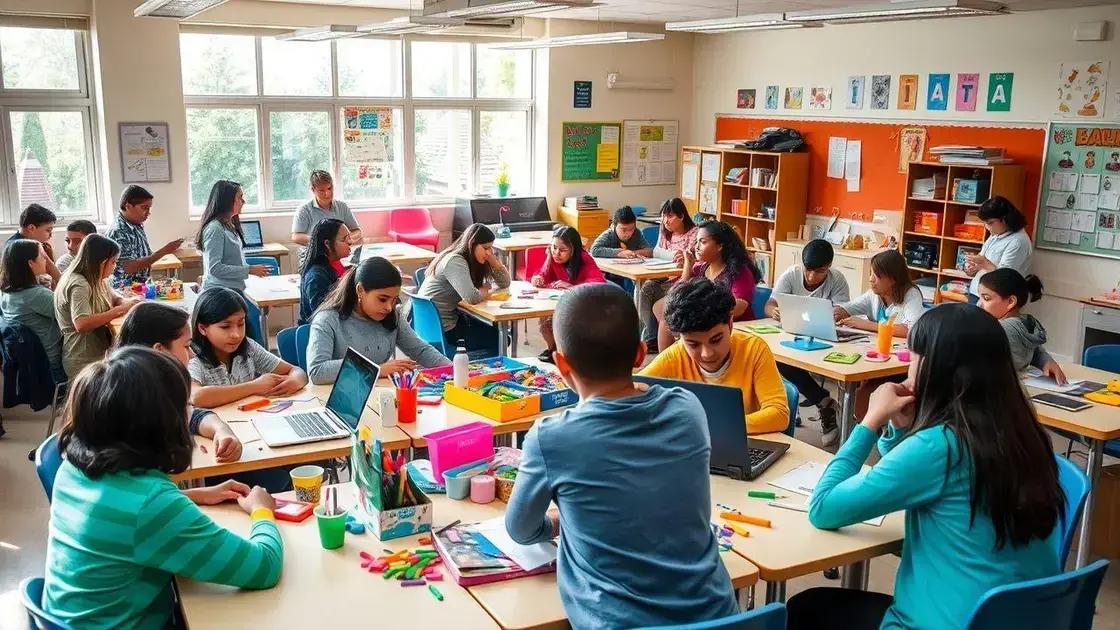
Encouraging student-led projects is a powerful way to promote autonomy and creativity in the classroom. When students take charge of their learning, they become more invested in the process and outcomes. This method nurtures essential skills such as leadership, teamwork, and critical thinking.
Benefits of Student-Led Projects
Implementing student-led projects allows learners to explore their interests deeply. They gain a sense of ownership over their education, which can lead to increased motivation. Additionally, these projects can help students develop time management and organizational skills as they create timelines and set goals for their work.
Project Ideas
There are countless ideas for student-led projects. Here are some examples:
- Students can research a social issue and develop a campaign to raise awareness.
- They could create a presentation or digital media project about a historical event.
- Conduct a science experiment that they design and implement.
By allowing students to choose their projects, they are more likely to engage with the content. Foster an environment where they feel comfortable sharing their ideas and collaborating. Encourage groups to brainstorm topics they are passionate about, promoting creativity and critical thinking.
Throughout the project, teachers should act as facilitators. Provide guidance and support by posing questions and encouraging exploration rather than giving direct answers. Regular check-ins can help ensure that students stay on track and feel confident in their abilities.
Utilizing gamification in education
Utilizing gamification in education can transform the learning experience for students. By incorporating game-like elements, teachers can create more engaging lessons. Gamification motivates students to participate actively in their learning process.
What is Gamification?
Gamification involves integrating game principles into non-game contexts, such as classrooms. This approach enhances traditional teaching methods by adding elements like points, levels, and challenges. When students see their progress represented in a fun way, they are more likely to stay engaged.
Benefits of Gamification
There are numerous benefits to gamifying your lessons:
- Increased student engagement through interactive activities.
- Immediate feedback that helps students track their progress.
- Encouragement to work collaboratively with peers.
Additionally, gamification can help improve problem-solving skills. Students learn to strategize and think critically as they navigate through challenges. For instance, a math game that rewards solving problems quickly encourages students to practice and improve their skills.
Moreover, gamification can cater to different learning styles. Visual learners may thrive with games that incorporate graphics and animations, while others may excel in quizzes and competitions. This variety keeps lessons fresh and appealing to all students.
Teachers can start gamifying their lessons by using tools like Kahoot! or Classcraft. These platforms make it easy to create fun quizzes and design game-like experiences. With the right approach, gamification can lead to a dynamic classroom where learning is both enjoyable and impactful.
Fostering creativity through open-ended activities
Fostering creativity through open-ended activities is essential for encouraging students to think independently and explore their ideas. These types of activities allow students the freedom to express themselves in various ways, using their imagination to create unique outcomes.
What Are Open-Ended Activities?
Open-ended activities do not have a single correct answer. They encourage students to use their creativity and critical thinking skills. For instance, assignments like art projects or storytelling prompt students to derive their ideas, fostering a sense of ownership over their work.
Examples of Open-Ended Activities
There are many effective examples of open-ended activities:
- Art projects where students create based on a theme.
- Writing prompts that allow students to choose their characters and plots.
- Science experiments where students design their hypothesis and test methods.
These activities can help students develop a passion for learning. When they feel free to experiment and innovate, they are more likely to engage. Teachers can create a supportive environment by providing resources and guidance while allowing room for exploration.
Additionally, fostering creativity through open-ended activities can enhance problem-solving skills. As students navigate challenges during their projects, they learn to adapt and rethink strategies. This experience is crucial for their academic growth and personal development.
Lastly, encouraging reflection after activities can help solidify lessons learned. Students can discuss what they enjoyed and what challenges they faced. This dialogue not only enhances their understanding but also builds confidence in their creative abilities.
FAQ – Frequently Asked Questions about Classroom Innovation Ideas
How can collaborative projects enhance student learning?
Collaborative projects foster teamwork and communication skills, allowing students to learn from one another and engage more deeply with the material.
What role does technology play in interactive lessons?
Technology integrates digital tools that facilitate engagement and provide immediate feedback, making lessons more dynamic and effective.
How does gamification impact student motivation?
Gamification introduces game elements that make learning enjoyable, increasing student participation and enthusiasm for the subject matter.
What are open-ended activities, and why are they important?
Open-ended activities encourage creativity and critical thinking, allowing students to explore topics freely and express their unique ideas.

